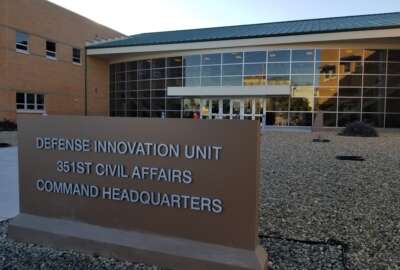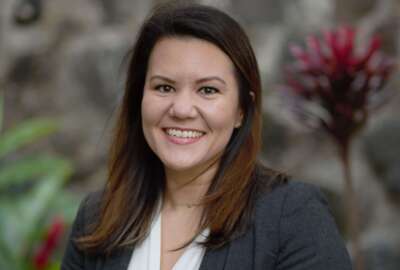National Security Innovation Capital meets investment milestone for the year
National Security Innovation Capital is maturing as an investment fund with more hardware startups in its portfolio, and ambitious plans to expand its reach.
When National Security Innovation Capital (NSIC) obligated its available funds for the current year, it marked a milestone for the three-year-old government-backed venture fund. After starting as an idea — exploring whether the government can make an impact on early-stage hardware production to benefit the Defense Department — it quickly developed into a working fund with 17 companies in its portfolio.
The initial seed money from Congress spanned five years at $15 million per fiscal year after the first year with a mandate of providing funds to start-up hardware companies that could provide the Defense Department much-needed products from secure domestic sources.
“Hardware is technically a lot more demanding, a lot riskier, takes a lot more capital and takes a lot longer before you have something that potential customers can really evaluate. So that whole risk profile is not very attractive to most venture capital firms until later stages where the risk has been reduced, Tex Schenkkan, NSIC’s director said in an interview with Federal News Network.
This is the first year the fund was able to dedicate all of its money early in the year. Schenkkan attributes the change to the organization maturing, getting better at its job and word getting out to companies that NSIC has money to invest. In its current form, NSIC looks for investments in the areas of autonomy, communications, sensors, space and power. Schenkkan said future areas for expansion might include micro-electronics or biotech hardware.
“With increased funding, we would probably broaden the number of topics that we are interested in. For example, today, we don’t do anything in human systems or biotech, we just can’t spread ourselves quite that broadly. There are other areas that we would go more directly at where there’s need, and where we think we could have an impact,” Schenkkan said.
Future growth could include foreign investment in countries allied with the U. S. and adding more categories to the investment possibilities. The fund is part of the Defense Innovation Unit, which offers funding to military-related projects.
“If we could have an increase in funding, we need to fund companies at a higher level than we’ve been able to. So far, we’ve restricted ourselves to only U.S. companies,” Schenkkan said. “But we would be very interested in working with our closest allies, to fund key startup companies that can contribute to their commercial success as well as to mutual national security interests. We just don’t have quite enough money to do that at this point.”
The fund works with companies at three different levels. For some companies, NSIC provides the first outside money available. The fund made some investments a little later in the process after initial funding had been secured, but more was needed to move towards production.
“A couple of the companies we funded have had a small amount of private venture capital before we arrived, but it wasn’t enough to help them go as fast as they were capable of,” Schenkkan said.
In a third scenario, NSIC funds firms simultaneously with private venture capital when there is potentially a need to convince other investors to move forward.
“Our commitment to funding the company unlocks some VCs that were kind of just on the edge of whether they wanted to invest or not. When we’ve made a commitment, then they say, ‘oh, okay, well, DoD is really interested in this, we’ll put our money in’,” said Schenkkan.
The companies that fit the NSIC profile make products with dual-use potential so they can sell to both the Defense Department and the commercial sector. NSIC looks for companies that show potential to move their product through to the next stage. While Schenkkan said the fund doesn’t have the same criteria for investment as commercial funds, the companies must demonstrate potential to prosper in a commercial market.
“Eventually, do they actually get to market and sell products to both commercial and defense applications? We don’t have a percentage goal there. But we don’t have quite as high a bar as a typical venture capital firm would that looks only to fund so-called unicorns,” he said.
Copyright © 2025 Federal News Network. All rights reserved. This website is not intended for users located within the European Economic Area.
Alexandra Lohr, a former staff member, covered the Defense Department for Federal News Network until September 2023.







